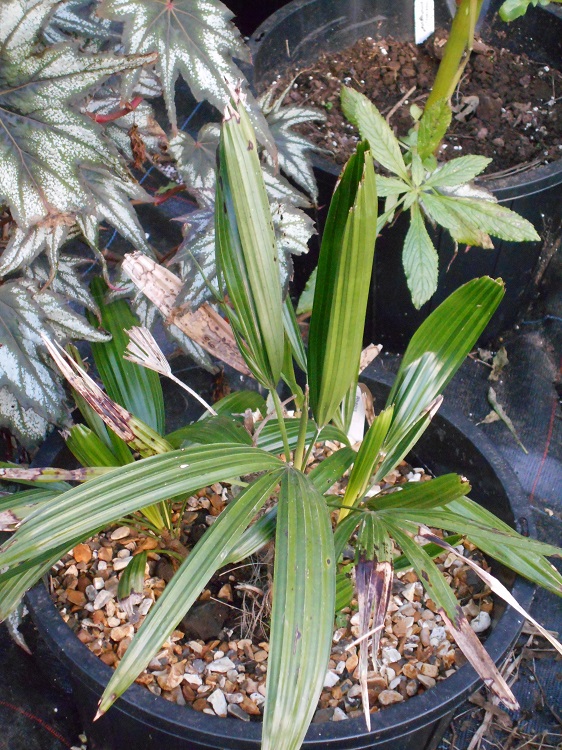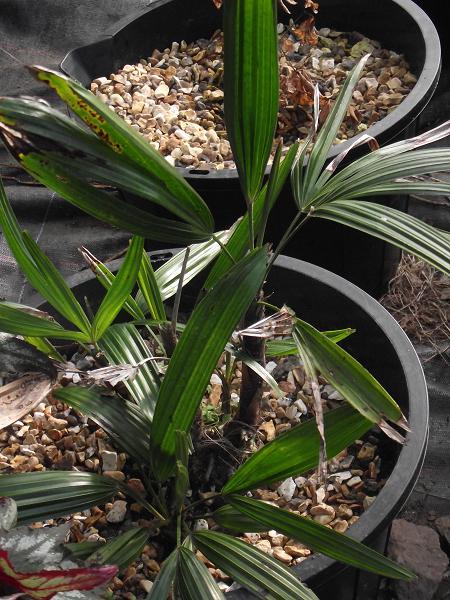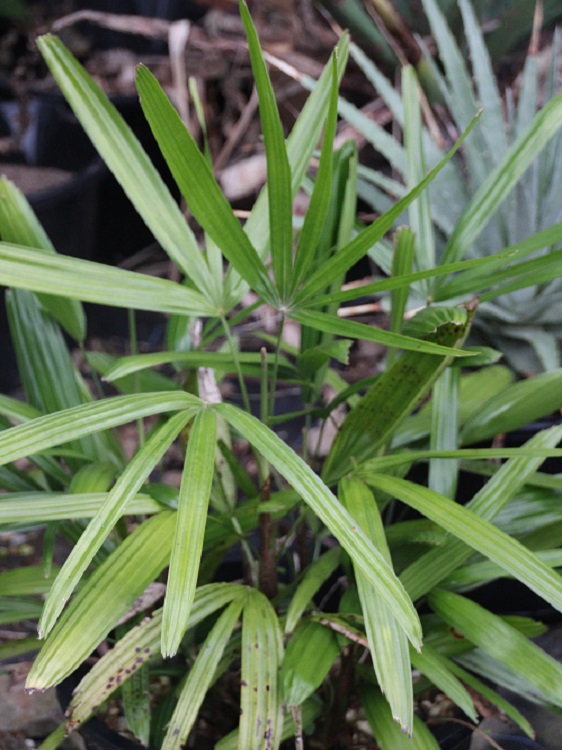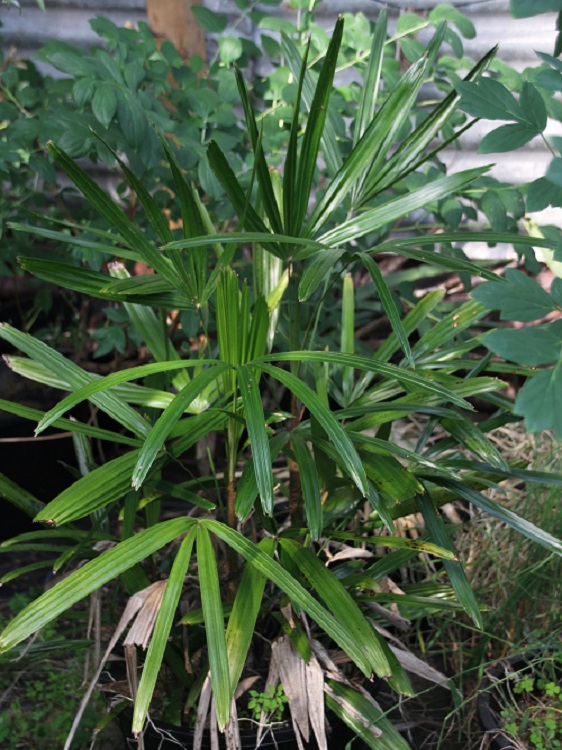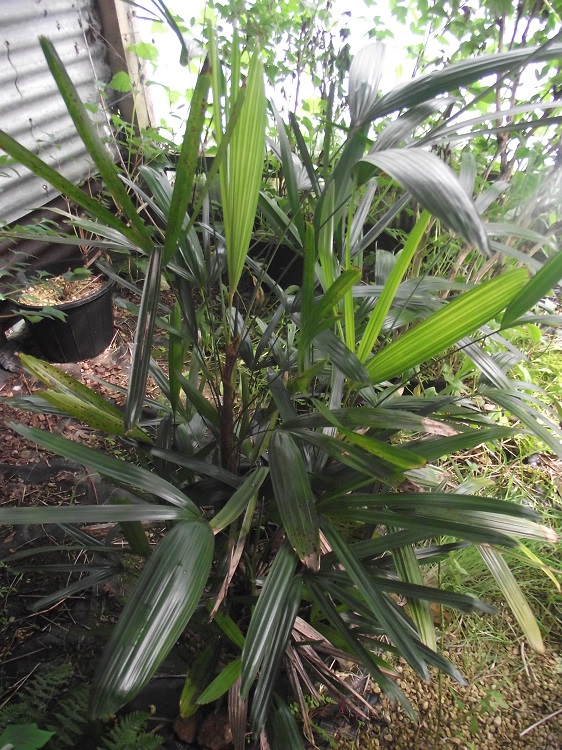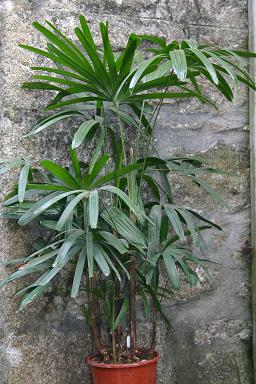 |
Rhapis excelsa is widely grown in Japan in its variegated forms.
I grow the typical green leaved plant as a trial. I want to try the variegated forms, but need to build up my confidence a bit first.
I made a foolish mistake with my large plant, allowing to to root through into the floor of the greenhouse.
When it had to be moved it dried out almost instantly, the leaves wilting slightly. Fatal for a palm.
Fortunately I still have a couple of babies in pots to replace it.
In 2012 I moved it to the Agave house and it has prospered without significant damage despite a number of harsh winters. A plant in the Hedychium house has also done well.
A plant growing outside at Tremenheere Garden near Penzance was seriously damaged in the winter of 2008.
with less protection.
The North Carolina Extension Gardener Plant Toolbox says:
"Lady palm is a tropical, evergreen, rhizomatous perennial in the palm family (Arecaceae). The species is native to southern China and Vietnam, where it grows in the understory of wet forests.
The genus name is from the Greek for “rod,” presumably alluding to the stems that have been used for walking sticks. The species epithet means “tall,” as this is one of the taller species in the genus.
Lady palms are clustering palms that produce individual stems along underground rhizomes. When planted in the ground, the stems are not produced in a tight cluster, giving the impression of a copse of small palms.
The fiber-covered stems are slender and support a crown of several palmately compound leaves.
|


